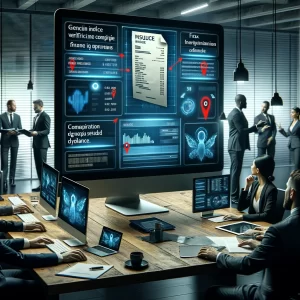How To Talk About Expense Management Software
By James Thomas, CEO, and Ryan Courtade, VP of Revenue Operations, Itemize Corp.
You’re a middle manager, and there’s a major problem with an overlooked area of your business—managing expenses. Hundreds of invoices and bills fill desks, cars, and briefcases. Reimbursements for client expenses take months. And to make matters worse, everyone has “their way” to manage this chaotic process.
In an age where many companies are adopting digital workplaces, it’s imperative to ask: can technology do this better than humans? In this case, you know that expense management software will help; it can automate the tedious and time-consuming process of data entry. You’re convinced this tool is the answer to eliminating unneeded headaches, but how do you talk to your executive team about it? How do you get them on board? We’ll walk you through key questions to ask and points to make, allowing you to easily demonstrate how this business technology is the competitive advantage they simply can’t pass up.
What if you could always know where your money is being spent and who is spending it? Every business needs to know how its money is being spent. Who is spending it, where, and how often? Does the Controller or CFO of your organization know this answer? If not, try explaining it this way: expense management systems provide visibility that simply doesn’t exist when managing expenses the ‘old-fashioned’ way. Forget using envelopes, folders, and paper receipts. Instead, upload receipts to a mobile app on your phone, a web interface, or an API. And, by the way, this visibility allows you to more easily spot potential fraud issues.
Wouldn’t it be nice to get reimbursed quickly?
Let’s be honest, piles of receipts and bills throughout the office isn’t helping anyone. Yet, we all want to be paid back. Having unorganized stacks of paper—and sometimes e-receipts—slows down the process. You’ve witnessed it, and you can show your managers the time frames. An expense management solution, on the other hand, allows you to generate expense reports as often as needed. No more waiting until the end of a project or the end of a month. Accelerate reimbursements with an expense management solution, and eliminate unnecessary delays and potential errors.
How often do we hear around here, “I know how to do expenses ‘my way?’” Paint the picture of what you see on a normal day—some employees using envelopes or folders for receipts, others looking at e-receipts, and everyone manually enters the data into spreadsheets. When there isn’t a set standard, receipts get lost, notes are forgotten, and money is lost. Using an expense management tool ensures both consistency and accountability.
What would you do with an extra 20 hours a month (while saving $2,000)? Being disorganized with expenses is costly. Payments are frequently late and vendor relations can be harmed. Enlighten your managers that other, similar-sized companies have saved an extra $500 to $2,000 each month just from using expense management software. And the extra 20 hours per month? You can remind them about that employee engagement idea you two were brainstorming months ago that you finally can implement. You can focus more on other, more important areas of the business instead of tracking receipts and reimbursements. Let smart technology do that—and welcome to the ever-changing digital workplace.
About The Author
James Thomas is the Founder and CEO of Itemize, a payments data company whose technology transforms receipts and invoices into structured information for commercial card data enhancement, accounts payable management, and employee expense tracking.
Prior to founding Itemize, Jim launched MasterCard’s payments data and analytics business, applying behavioral analytics and mathematics to large payments data sets. Previously, Jim served as a vice president at First Manhattan Consulting Group. He has also held positions at Morgan Stanley and Booz-Allen and Hamilton. Jim holds a BA from Franklin and Marshall College, a Masters of International Affairs from Columbia University, and an MBA from Columbia Business School. Jim also serves on the board of directors of Cultural Vistas, a non-profit international exchange organization for young professionals.



